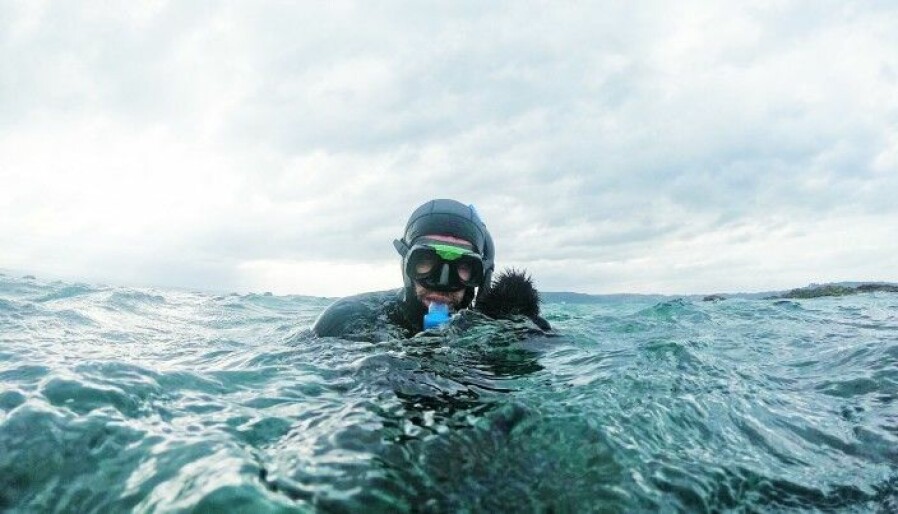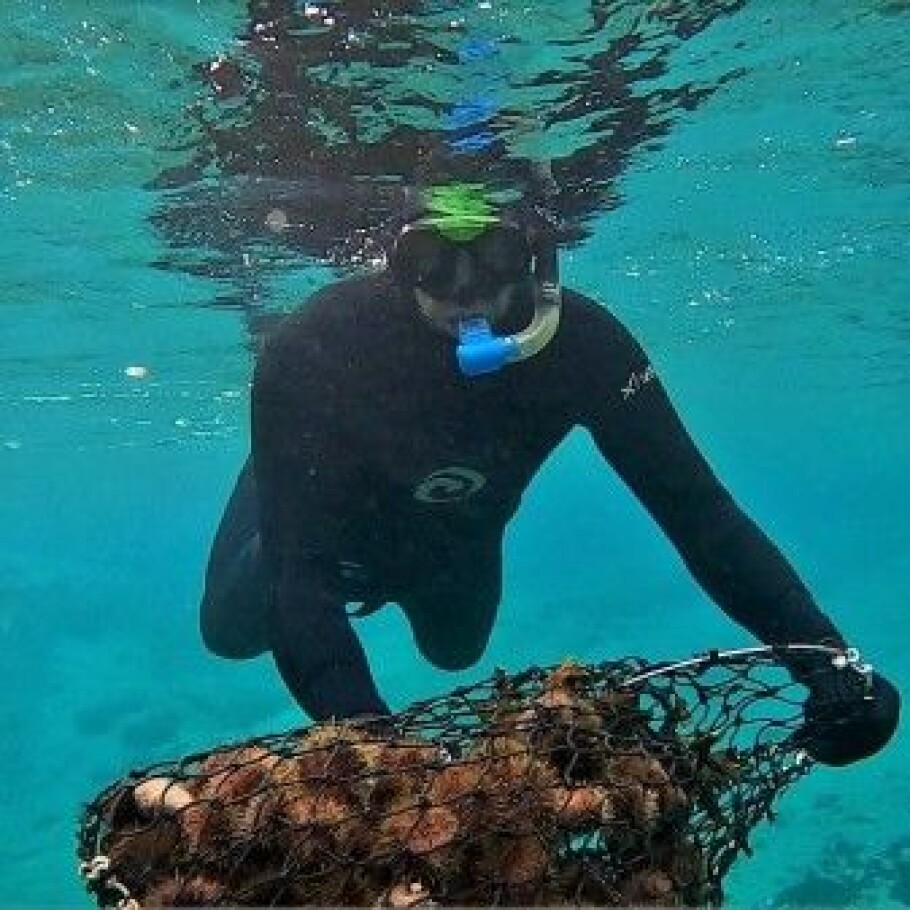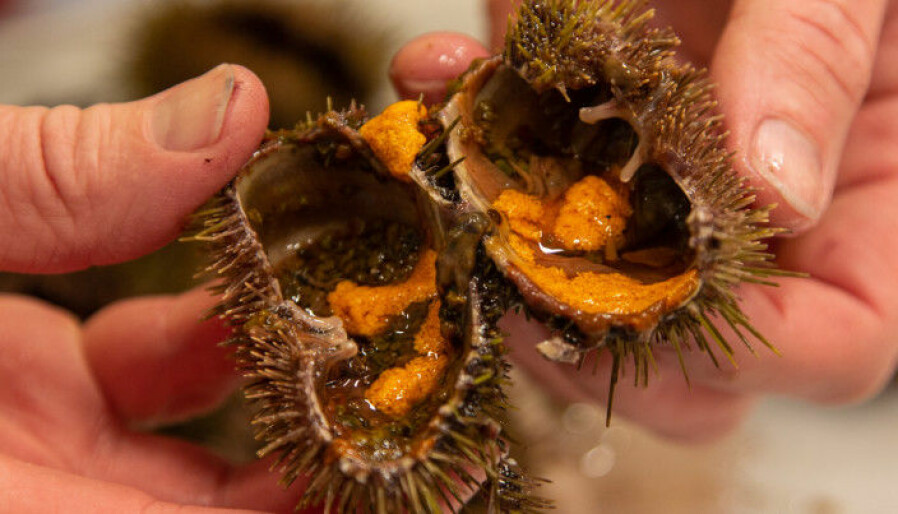
Norway's first onshore sea urchin farm up and running
Sea urchin farming could give Norway a new export commodity for gourmet restaurants in Europe and Asia, and help to save the kelp forests on Norway’s coastal seabed.
An explosion of sea urchins is threatening to turn the Norwegian coastal seabed into a desert. The sea urchins live on Rhodophyta and saltwater plants like brown algae, also called kelp.
Seabeds can die when sea urchin numbers are too high. The kelp forest off the coast of northern Norway has almost been wiped out in recent decades.
"This is very worrisome, and the best solution to the problem is to remove the sea urchins," says researcher Philip James, an expert on sea urchins at the Nofima research institute in Tromsø.
Win-win resource
The harvesting of the destructive sea urchins is one of the reasons that Urchinomics is now opening Norway's first land-based sea urchin ranch at Finnøy in Stavanger municipality.
The second reason is to raise the sea urchins to sell as delicacies in a number of countries in Europe and Asia.
“This could become a win-win resource,” says researcher Hartvig Christie of the Norwegian Institute for Water Research (NIVA).
Kelp forests are important for the climate
The sea urchin invasion dates back to the 1970s. Experts in the field have no good explanation for the cause of the outbreak.
According to estimates, the number of sea urchins reached 80 billion along the coast, but in recent years the sea urchin problem has declined. Sea urchins like the cold temperatures found along the Norwegian coast north of Trondheim.

“Theories abound, but there are no good scientific articles on why this happens,” says sea urchin expert Sten Siikavuopio at Nofima.
Kelp deforestation is also occurring off the coast of many other countries, such as the United States and Canada.
Kelp forests bind up CO2 and thus act as a form of CO2 capture. They are as important to the environment of the earth as tropical rainforests are on land.
“Probably climate change and more crabs have had a positive effect,” says Christie. “Our regular crabs and also king crabs feed on sea urchins.”
Harvesting sea urchins

The sea urchins at the Finnøy pilot plant won’t be raised from roe, but will be harvested from the sea and grow to maturity in onshore facilities.
“The roe inside the sea urchins is the culinary delicacy. For a sea urchin to be marketable, the roe has to be a certain size. That's why we catch sea urchins in the ocean, and then bring them to the plant to raise with specially developed feed,” says researcher Philip James at Nofima.
The sea urchins are kept in channels designed to be self-cleaning and to provide maximum water flow to the sea urchins.
Short production time
In just 10 to 12 weeks, the sea urchins can be harvested for sale to the food industry.
James expects the plant to produce up to two tonnes of sea urchins in two months.
Developed by Nofima, the feed is specially formulated to help the sea urchins grow quickly. Rogaland Havbrukspark is collaborating with Urchinomics, which has licensed Nofima’s feed.
Sea urchin roe a culinary delicacy
Rogaland Havbrukspark will research how to profitably distribute the farmed sea urchins to markets in Europe and Asia.
The roe in the sea urchins is an attractive culinary delicacy internationally, and the methods used can turn a global environmental threat into an economic adventure.

“The roe inside the sea urchins is a sought-after delicacy in several countries in Asia. Japan is probably the best market,” James says.
But a number of European cultures also have a long tradition of eating sea urchin roe.
“The roe is especially popular in France, Italy and parts of Spain,” says James. The market for the roe is growing in these countries.
Technology developed in Norway
According to James, the special feed for the sea urchins was initially developed by Nofima many years ago. It has been used in numerous other countries, such as Japan, Canada and the United States.
“Now we’re using our own technology, and it will be exciting to see how well we succeed in growing our production and distribution,” he says.
James sees no reason why Norway shouldn’t profit from technology developed there.
“The project benefits the region in several ways. The production and sale of sea urchins can increase value creation; we’ll produce even more sustainable food, and at the same time capturing and converting CO2 will increase because the kelp forest will return,” Stavanger Mayor Kari Nessa Nordtun said in a press release.
Kelp forest revives when sea urchins are removed
The sea urchins create a desert on the seabed. Researcher Hartvig Christie has been part of several projects involving the removal of sea urchins over the years.
Along the coast north of Trondheim, scientists have killed sea urchins using hammers, and they have used burnt lime to remove them in the Porsanger Fjord outside Hammerfest.
“The result has been the revival of the kelp forest with all the positive ripple effects that brings,” Christie says.
As the kelp grows back, you see higher production, CO2 capture, and more wildlife and fish.
Land-based facility good for the environment
Construction of the recirculating aquaculture system (RAS) is set to start on March 1 this year. This kind of onshore RAS is also being tested for salmon farming.
An onshore recirculation facility will have a number of environmental benefits. The system controls waste feed and faeces from the animals. But such facilities also face considerable challenges.
The water has to be cleaned of waste material, and enough oxygen and nitrate need to be added.
The major risk is H2S, the extremely toxic gas hydrogen sulphide.
Iceland a major exporter
Iceland already exports 300 tonnes of wild-caught sea urchins a year to the international market, which gives a hint as to the potential demand.
“If Rogaland Havbrukspark succeeds in harvesting a lot of the sea urchins along the coast, the ones that are left will graze without much competition for food. They’ll grow faster, have more eggs and also become a more realistic harvesting opportunity,” says Christie.
“Our best hope is for this project to become a win-win situation,” says Christie.
Translated by: Ingrid P. Nuse
Reference:
P. Carlsson and H. Christie: Regrowth of kelp after removal of sea urchins (Strongylocentrotus droebachiensis). Report, Norwegian Institute of Water Research. 2019.
———































